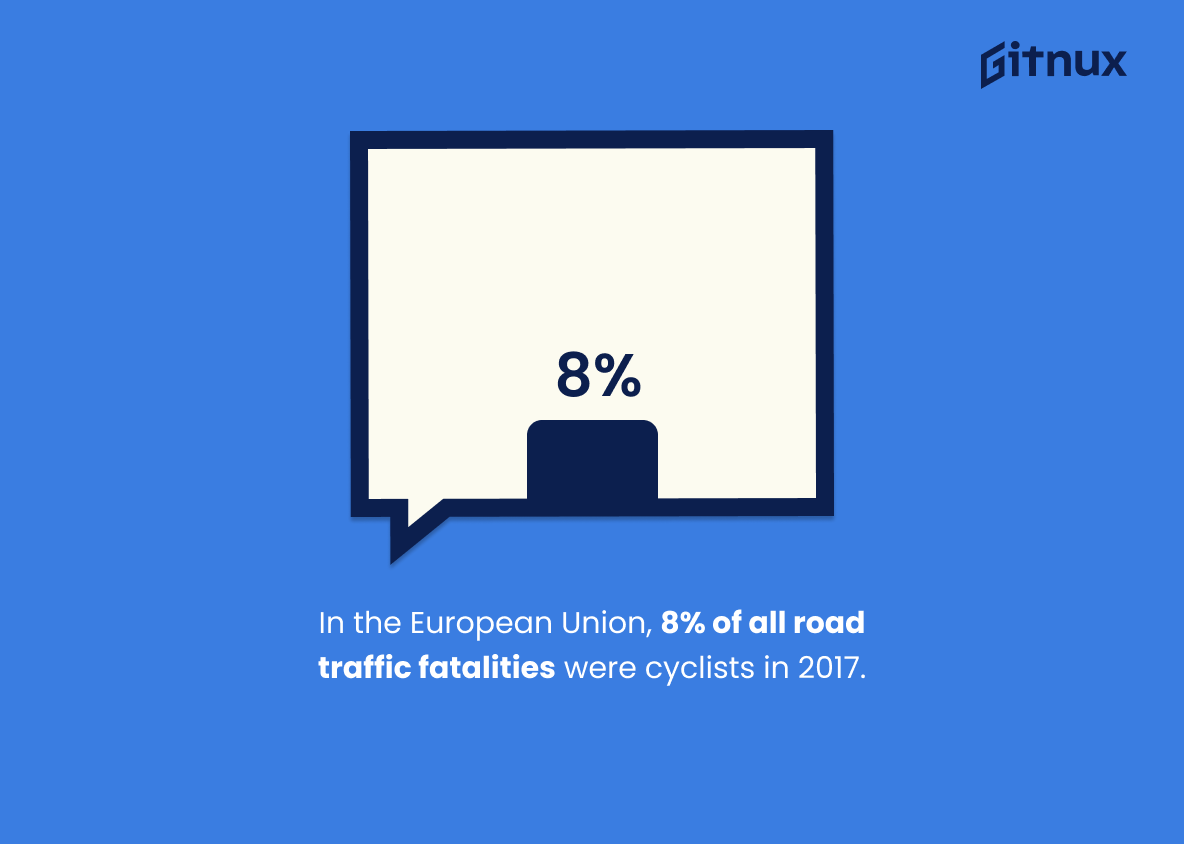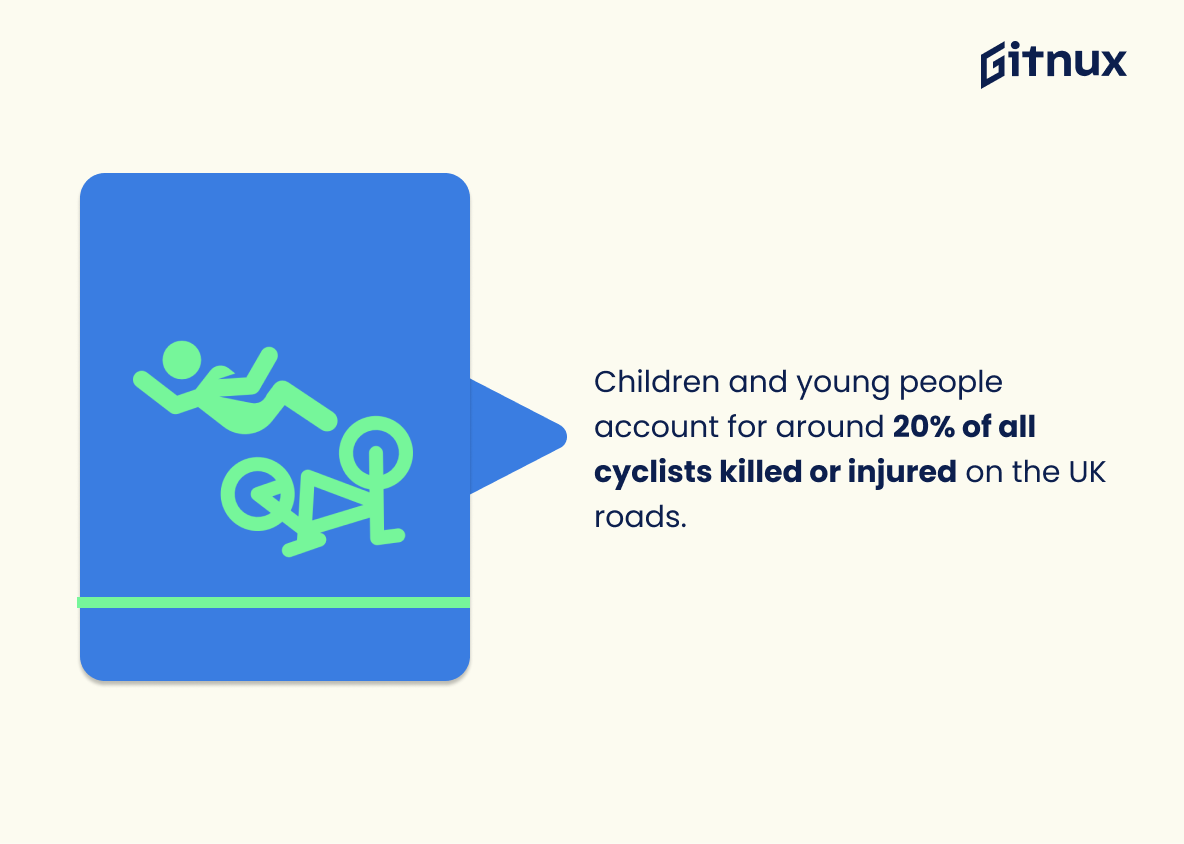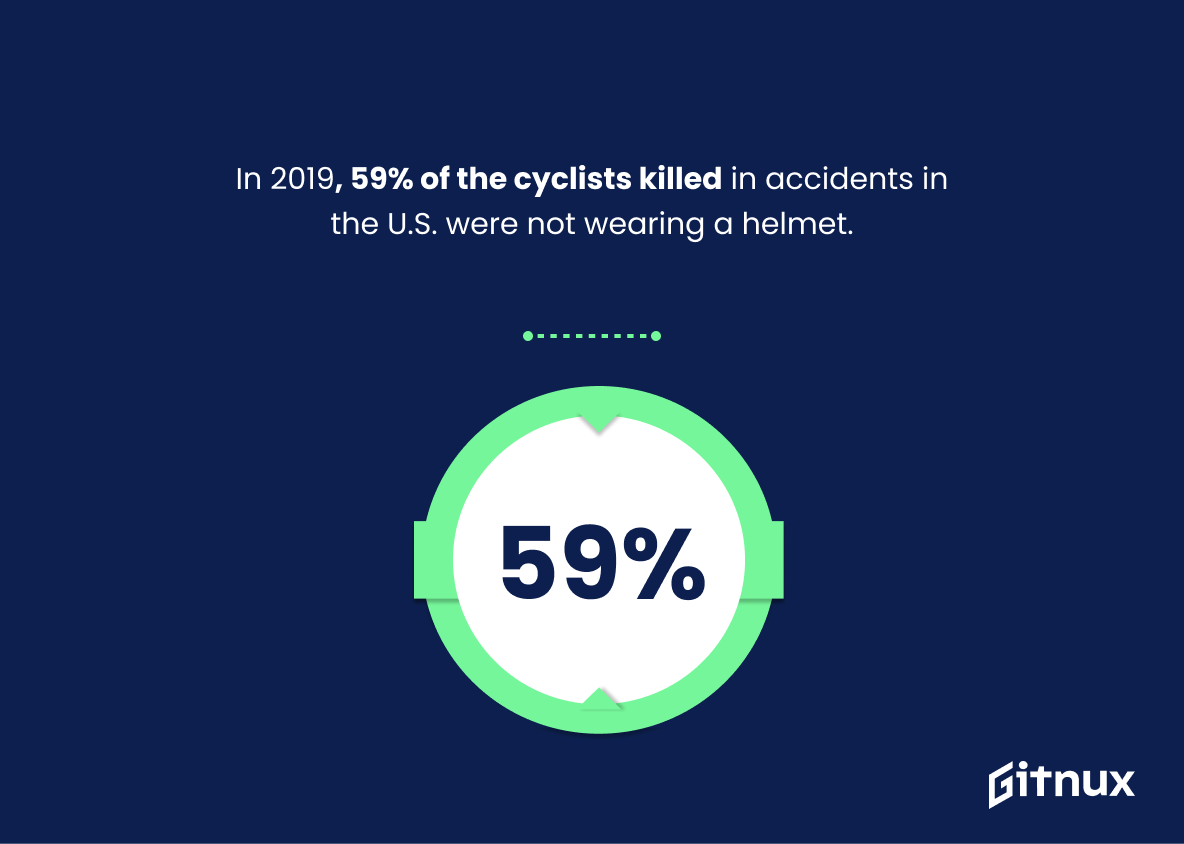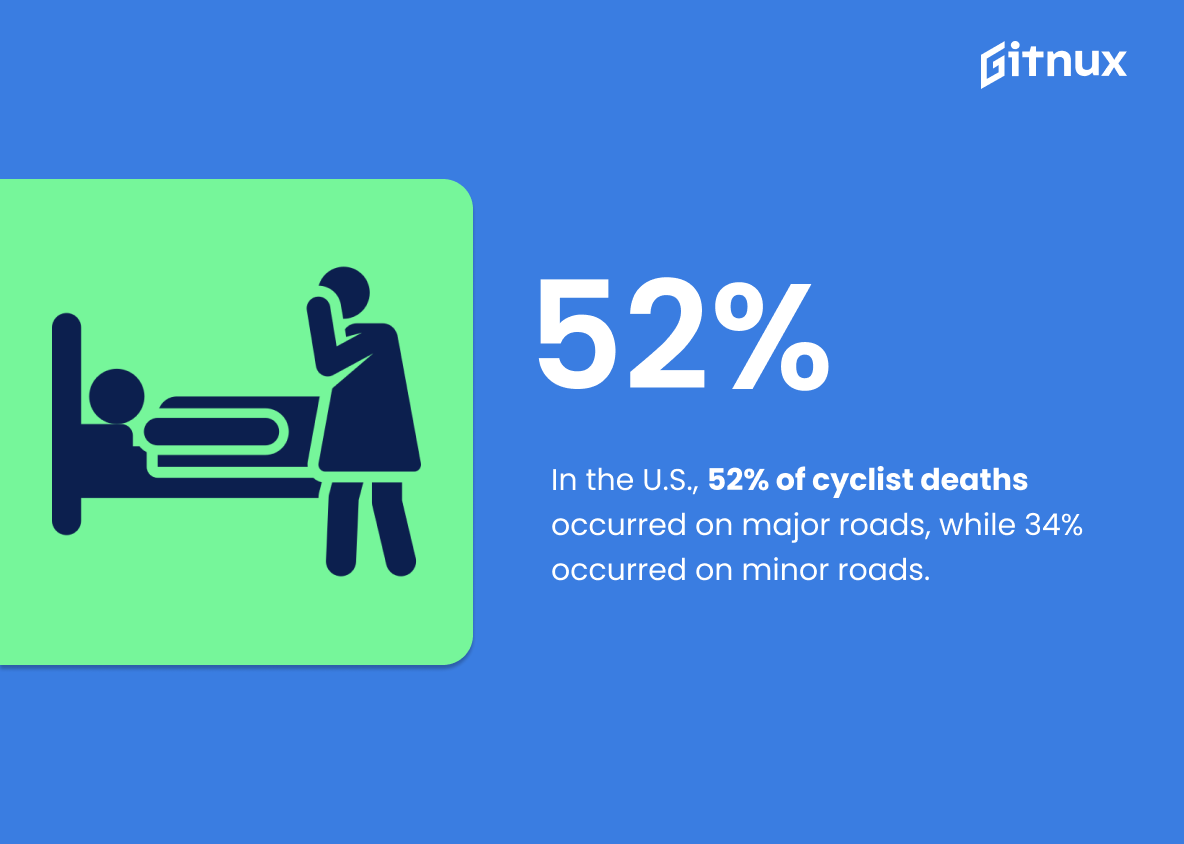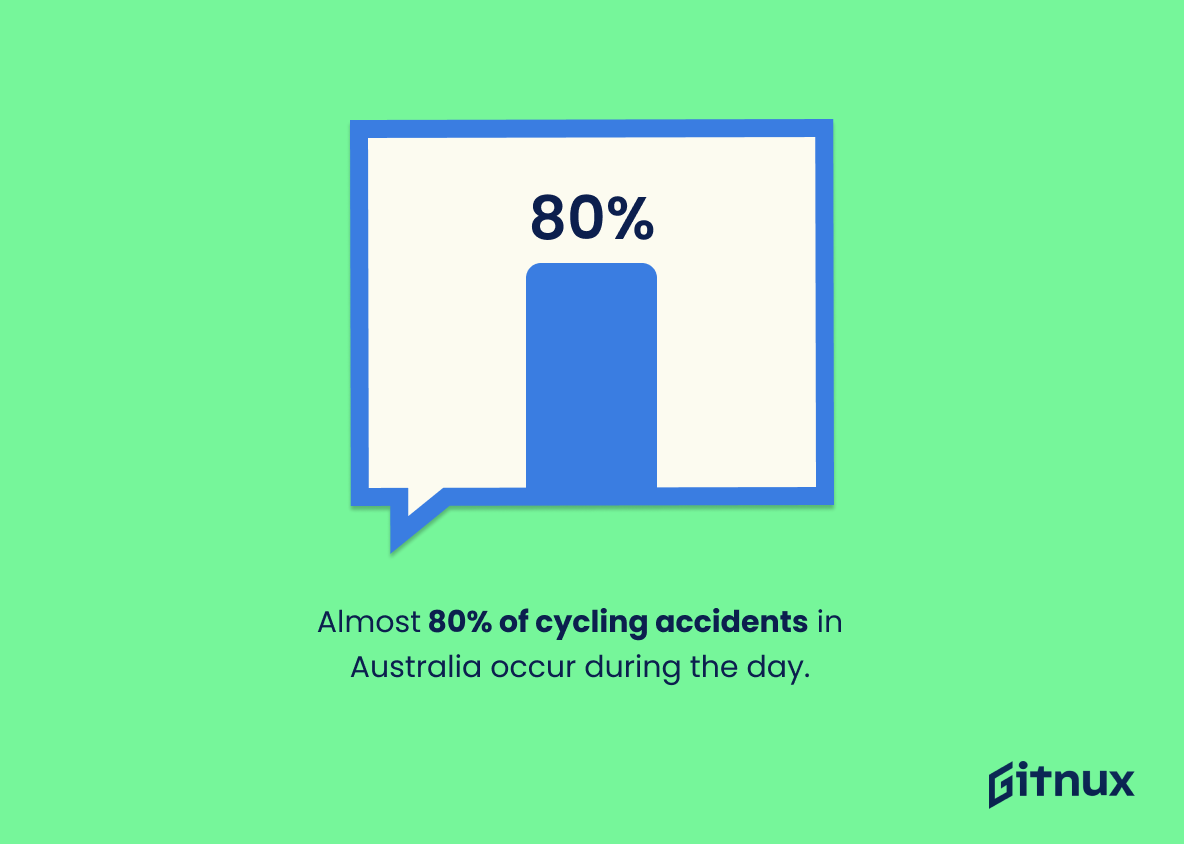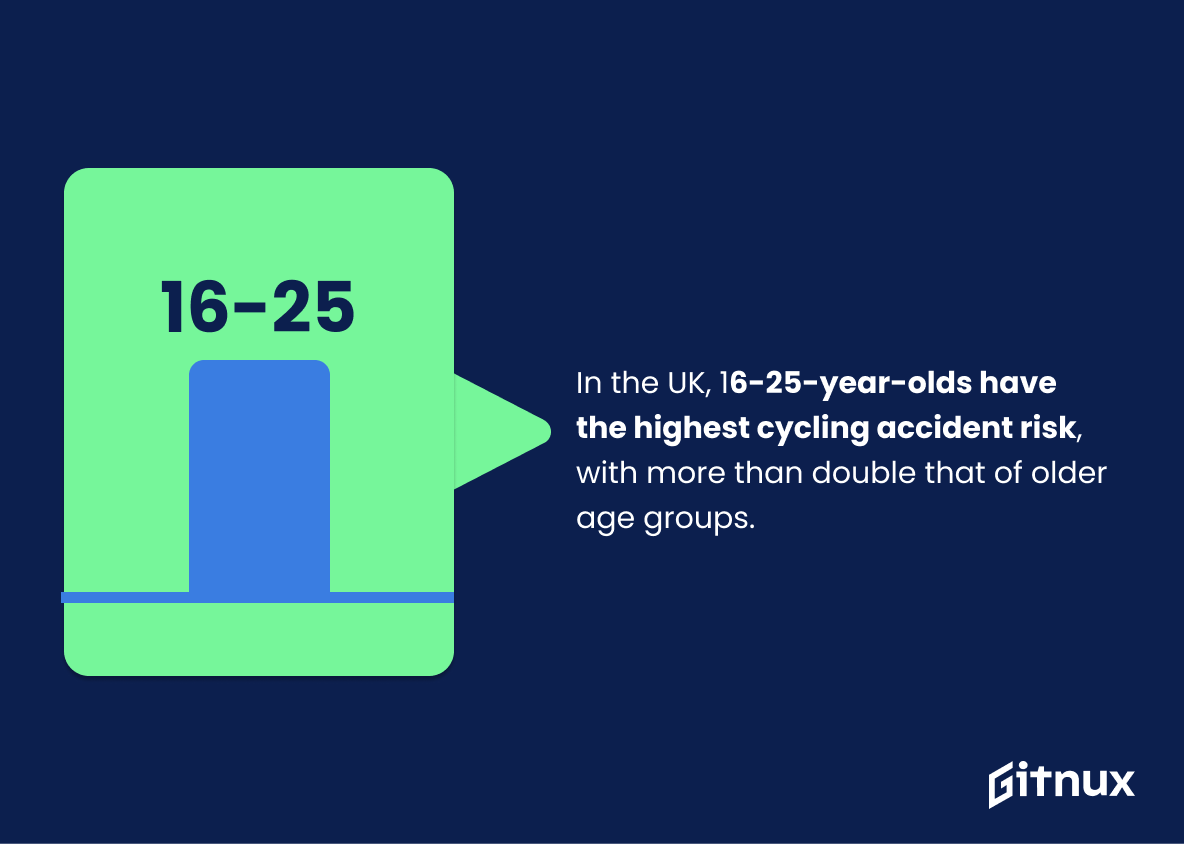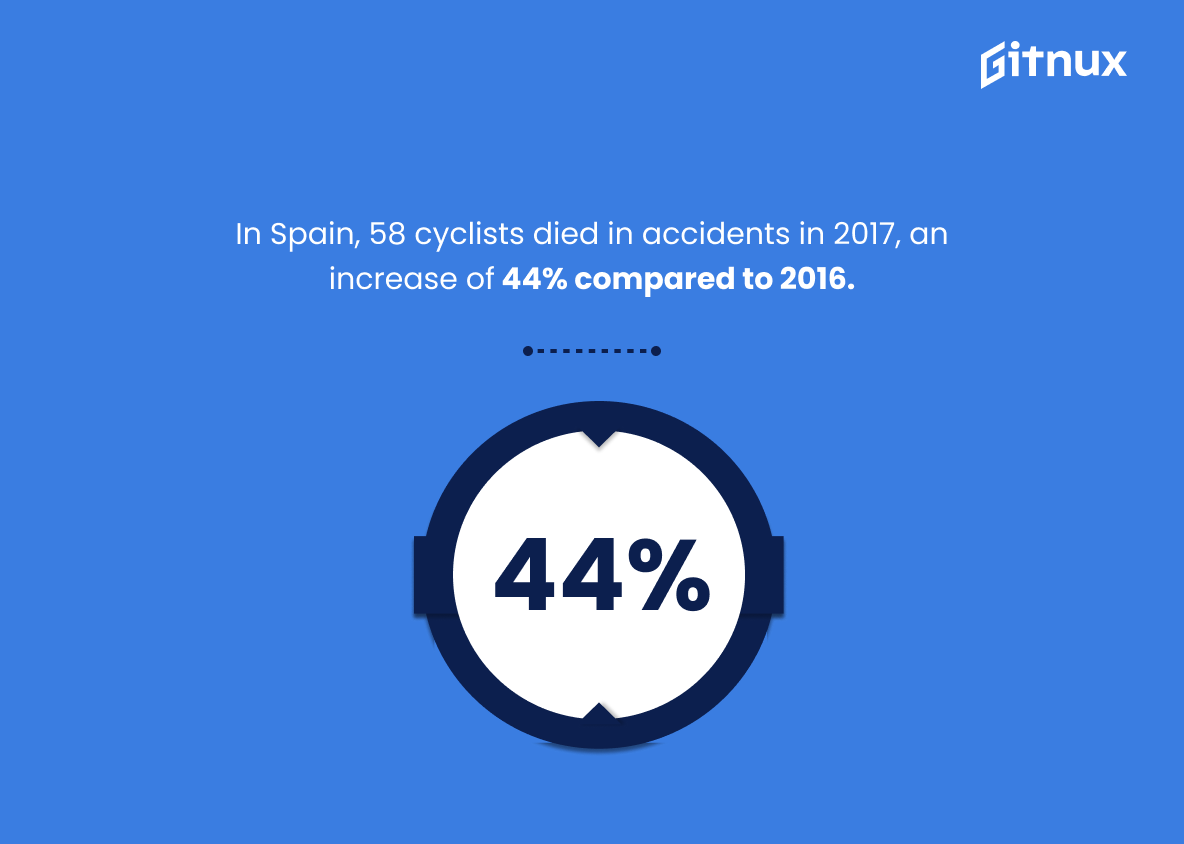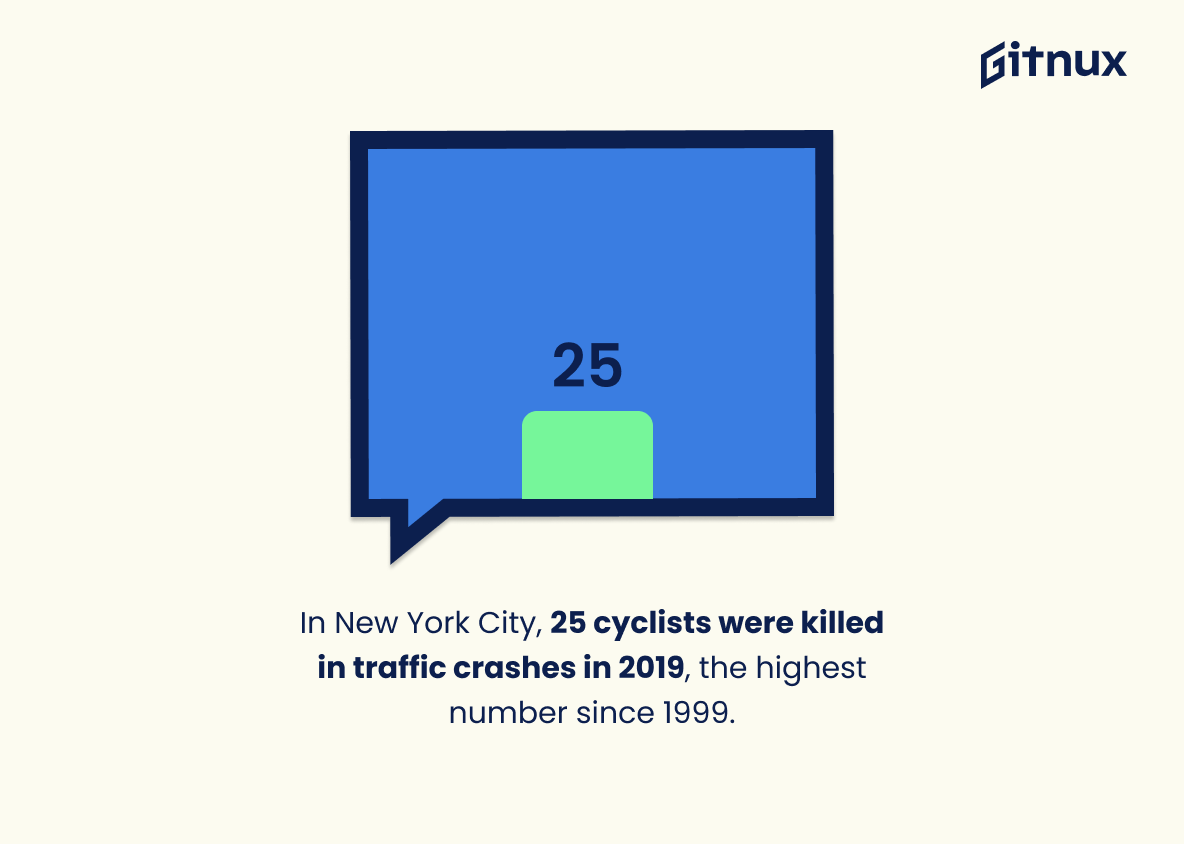Cycling is a popular form of transportation and recreation, but it can also be dangerous. Every year, thousands of cyclists are killed or injured in traffic accidents around the world. In this blog post, we will look at 20 statistics about cycling accident fatalities from different countries to gain an understanding of how common these incidents are and what factors contribute to them. We’ll examine data on cyclist deaths by country as well as age group, time of day when most accidents occur, helmet use rates among those killed in crashes and more. By looking at all these numbers together we can get a better idea of how best to protect ourselves while riding our bikes on the roads.
Cycling Accident Statistics Overview
41% of cycling accidents in the UK happen at intersections, with roundabouts being the most dangerous.
This statistic is a stark reminder of the dangers cyclists face when navigating intersections, particularly roundabouts. It highlights the need for cyclists to be extra vigilant when approaching these areas, as well as for drivers to be aware of cyclists and take extra care when driving through intersections. Knowing this statistic can help cyclists to be more prepared and cautious when approaching intersections, and can help drivers to be more aware of cyclists and take extra care when driving through intersections.
In the European Union, 8% of all road traffic fatalities were cyclists in 2017.
This statistic serves as a stark reminder of the dangers cyclists face on the roads of the European Union. It highlights the need for increased safety measures to protect cyclists and reduce the number of fatalities. It also serves as a call to action for cyclists to take extra precautions when riding, such as wearing a helmet and being aware of their surroundings.
75% of fatal cycling accidents in the UK happen in urban areas.
This statistic is a stark reminder of the dangers of cycling in urban areas. It highlights the need for cyclists to be extra vigilant when riding in cities, as the risk of a fatal accident is significantly higher than in rural areas. It also serves as a call to action for local authorities to take steps to improve cycling safety in urban areas, such as introducing dedicated cycle lanes and improving road infrastructure.
Children and young people account for around 20% of all cyclists killed or injured on the UK roads.
This statistic is a stark reminder of the dangers that cyclists face on the roads, particularly those who are young and vulnerable. It highlights the need for greater safety measures to be taken to protect children and young people from the risks of cycling on the roads. It also serves as a call to action for parents, guardians, and other adults to ensure that young cyclists are properly educated on the risks of cycling and are provided with the necessary safety equipment to protect them.
In 2019, 59% of the cyclists killed in accidents in the U.S. were not wearing a helmet.
This statistic serves as a stark reminder of the importance of wearing a helmet while cycling. It highlights the fact that not wearing a helmet can have serious and potentially fatal consequences. It is a reminder that cyclists should take all necessary precautions to ensure their safety while on the road.
In the U.S., 52% of cyclist deaths occurred on major roads, while 34% occurred on minor roads.
This statistic is a stark reminder of the dangers cyclists face on the roads. It highlights the fact that major roads, which are often more heavily trafficked, pose a greater risk to cyclists than minor roads. This is an important point to consider when discussing cycling safety, as it emphasizes the need for cyclists to take extra precautions when riding on major roads.
Almost 80% of cycling accidents in Australia occur during the day.
This statistic is a stark reminder that cyclists should be extra vigilant during the day, when the majority of cycling accidents occur. It highlights the importance of taking extra precautions when cycling during the day, such as wearing a helmet, using lights and reflective clothing, and being aware of your surroundings.
From 2010-2019, there was a 21% increase in cyclist deaths in the U.S.
This statistic is a stark reminder of the dangers of cycling in the U.S. It highlights the need for increased safety measures and awareness of the risks associated with cycling. It also serves as a call to action for cyclists, motorists, and policy makers to work together to reduce the number of cyclist deaths in the U.S.
In the UK, 16-25-year-olds have the highest cycling accident risk, with more than double that of older age groups.
This statistic is a stark reminder that young people are particularly vulnerable when it comes to cycling accidents. It highlights the need for increased safety measures and education for this age group, in order to reduce the risk of accidents and ensure that cycling remains a safe and enjoyable activity.
In Spain, 58 cyclists died in accidents in 2017, an increase of 44% compared to 2016.
This statistic serves as a stark reminder of the dangers of cycling in Spain, with a 44% increase in fatalities from 2016 to 2017. It is a clear indication that more needs to be done to ensure the safety of cyclists in the country.
76% of cyclist deaths in Poland occur on non-urban roads.
This statistic is a stark reminder that cycling safety is not just a concern in urban areas. While it may be easy to assume that the majority of cycling accidents occur in cities, this statistic shows that cyclists are at risk even on non-urban roads. This highlights the need for improved safety measures on all roads, not just those in cities, to ensure the safety of cyclists.
In New York City, 25 cyclists were killed in traffic crashes in 2019, the highest number since 1999.
This statistic is a stark reminder of the dangers cyclists face on the roads of New York City. It highlights the need for increased safety measures to protect cyclists from traffic crashes, as the number of fatalities has reached its highest level in two decades.
In Germany, 445 cyclists were killed in 2019, the highest number since 2010.
This statistic is a stark reminder of the dangers of cycling in Germany, with the highest number of cyclist fatalities since 2010. It serves as a warning to cyclists to take extra caution when on the roads, and to motorists to be aware of cyclists and drive safely.
Conclusion
The statistics presented in this blog post demonstrate the alarming reality of cycling accidents around the world. Every year, thousands of cyclists are killed or injured due to traffic collisions and other types of accidents. The data shows that male cyclists are more likely to be involved in an accident than female cyclists, while children and young people account for a significant portion of all casualties on UK roads. Furthermore, intersections such as roundabouts pose a particularly high risk for cyclist fatalities.
It is clear from these figures that much needs to be done in order to improve road safety for cyclists across different countries and regions. Governments should take steps towards implementing better infrastructure designs which prioritize cyclist safety at intersections, as well as introducing stricter laws regarding helmet use among riders – especially those under 18 years old – who have been found to be most vulnerable when it comes to fatal cycling incidents.
References
0. – https://www.cycleplan.co.uk
1. – https://www.etsc.eu
2. – https://www.amygillett.org.au
3. – https://www.crashstats.nhtsa.dot.gov
4. – https://www.ucsusa.org
5. – https://www.rospa.com
6. – https://www.iihs.org
7. – https://www..nyc.gov
8. – https://www.nhtsa.gov

